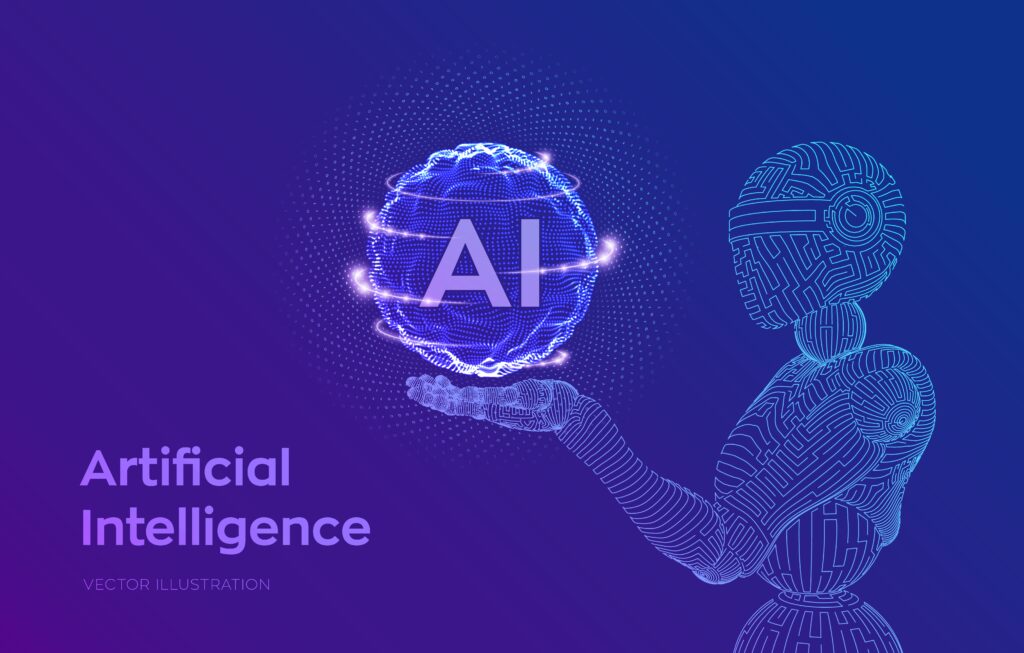Artificial intelligence has become one of the most significant technological forces reshaping modern healthcare. Unlike gradual technological adoptions of the past, AI integration is happening rapidly across every sector of medicine – from frontline clinical care to back-office operations. This comprehensive analysis explores the multifaceted ways AI is altering healthcare delivery, improving patient outcomes, and creating new challenges that the industry must address.

1. Revolutionizing Medical Diagnostics Through AI
The application of artificial intelligence in medical diagnostics represents one of the most promising areas of healthcare innovation. Traditional diagnostic methods often rely on human interpretation of medical images or test results, which can be time-consuming and subject to variability. AI systems are transforming this process through several key applications:
Advanced Medical Imaging Interpretation
- Radiology Enhancements: Deep learning algorithms can now detect anomalies in X-rays, CT scans, and MRIs with accuracy rates comparable to or exceeding human radiologists. Systems like Google’s DeepMind can identify breast cancer from mammograms with greater precision than human experts.
- Neurological Applications: AI models specialize in detecting early signs of neurological conditions such as Alzheimer’s disease by analyzing brain scan patterns years before symptoms manifest.
- Cardiac Analysis: New AI tools can measure heart function from echocardiograms with precision that eliminates inter-observer variability common in human analysis.
Pathology and Laboratory Medicine
Digital pathology platforms powered by AI can:
- Screen thousands of tissue samples rapidly
- Identify rare cellular patterns indicative of cancer
- Reduce diagnostic turnaround times from days to hours
- Provide second opinions with consistent accuracy
Early Warning Systems
Predictive analytics platforms integrate:
- Electronic health record data
- Genomic information
- Lifestyle factors
- Environmental influences
To calculate personalized risk scores for conditions like:
- Diabetes mellitus
- Cardiovascular disease
- Renal failure
- Sepsis
These systems enable preventive interventions before disease onset.
Implementation Challenges
Despite these advances, barriers remain:
- Integration with existing hospital IT infrastructure
- Physician acceptance and workflow adaptation
- Regulatory approval processes for diagnostic AI
- Liability concerns around AI-generated diagnoses
2. Personalized Medicine: AI-Driven Treatment Optimization
The era of one-size-fits-all medicine is ending as AI enables truly personalized treatment strategies. This transformation occurs through several mechanisms:
Genomic Medicine Applications
AI systems analyze:
- Whole genome sequencing data
- Gene expression profiles
- Protein interactions
To predict:
- Drug responses
- Disease susceptibility
- Optimal treatment pathways
For example, IBM Watson for Genomics processes genetic mutations to recommend targeted cancer therapies.
Dynamic Treatment Adjustment
Wearable devices and implantable sensors feed real-time data to AI systems that:
- Monitor medication effectiveness
- Detect adverse reactions early
- Adjust treatment dosages automatically
- Alert clinicians to needed interventions
Clinical Decision Support
AI-powered CDSS provide:
- Up-to-date treatment guidelines
- Drug interaction warnings
- Alternative therapy suggestions
- Clinical trial matching
These systems reduce medical errors and improve adherence to best practices.
3. Accelerating Pharmaceutical Innovation Through AI
The drug discovery process traditionally takes 10-15 years and costs billions. AI is dramatically compressing this timeline through:
Compound Screening and Design
Machine learning models can:
- Virtually screen millions of compounds in days
- Predict molecular behavior
- Design novel drug candidates
- Optimize chemical structures
For instance, Atomwise uses AI to identify promising drug candidates for rare diseases.
Clinical Trial Optimization
AI applications in trials include:
- Patient recruitment through EHR analysis
- Site selection based on historical performance
- Protocol design using historical trial data
- Real-time safety monitoring
This reduces trial durations by 30-50% in many cases.
Drug Repurposing
AI algorithms analyze:
- Existing drug databases
- Molecular pathways
- Disease mechanisms
To identify new uses for approved medications, such as:
- Sildenafil (Viagra) for pulmonary hypertension
- Thalidomide for multiple myeloma
4. The New Era of Surgical Robotics and AI
Robotic surgery is evolving beyond simple mechanical assistance to incorporate true artificial intelligence:
Current Capabilities
- Precision Enhancement: AI filters surgeon hand tremors
- Anatomical Recognition: Computer vision identifies critical structures
- Haptic Feedback: Simulates tissue resistance digitally
- Motion Scaling: Converts large movements to microscopic actions
Emerging Innovations
- Autonomous Suturing: Robots performing defined surgical tasks
- Augmented Reality Overlays: Real-time anatomical guidance
- Predictive Analytics: Warning systems for potential complications
- Telesurgery: Remote procedures with 5G connectivity
Specialized Applications
- Neurosurgery: Submillimeter precision in brain procedures
- Microsurgery: Anastomosis of sub-1mm vessels
- Orthopedics: Perfect implant placement and alignment
5. Transforming Healthcare Administration with AI
Administrative costs consume nearly 30% of U.S. healthcare spending. AI is streamlining these processes through:
Revenue Cycle Management
- Automated claims processing
- Denial prediction and prevention
- Fraud detection algorithms
- Prior authorization automation
Patient Flow Optimization
- Predictive admission forecasting
- Operating room scheduling
- Staffing level optimization
- Discharge planning assistance
Electronic Health Record Enhancement
- Voice-to-text documentation
- Clinical note summarization
- Relevant data highlighting
- Automated coding assistance
6. AI in Mental Healthcare Delivery
Mental health services face critical shortages worldwide. AI solutions include:
Therapeutic Applications
- CBT chatbots with natural language processing
- Mood disorder detection through voice analysis
- Suicide risk prediction algorithms
- Virtual reality exposure therapy
Diagnostic Support
- Depression screening through smartphone usage patterns
- PTSD detection via eye movement analysis
- Early psychosis identification through speech patterns
Treatment Monitoring
- Medication adherence tracking
- Symptom progression analysis
- Crisis intervention alerts
7. Critical Ethical and Regulatory Considerations
As AI permeates healthcare, significant challenges emerge:
Data Privacy Concerns
- Secure data sharing protocols
- De-identification standards
- Consent management frameworks
Algorithmic Bias Risks
- Representative training datasets
- Continuous bias monitoring
- Demographic performance validation
Regulatory Frameworks
- FDA approval pathways for AI devices
- CE marking in Europe
- Liability assignment protocols
Implementation Barriers
- Physician training requirements
- System interoperability challenges
- Reimbursement policy adaptation
8. Future Directions in Healthcare AI
The next decade will likely bring:
Predictive Health Ecosystems
- Continuous health monitoring
- Environmental risk factor integration
- Presymptomatic disease interception
Advanced Human-AI Collaboration
- Hybrid diagnostic systems
- AI surgical co-pilots
- Virtual physician assistants
Decentralized Healthcare Models
- Home-based AI diagnostics
- Community health drones
- Automated rural clinics
Frequently Asked Questions (FAQs)
Q: How does AI improve diagnostic accuracy in radiology?
A: AI reduces human error by consistently applying learned patterns across thousands of cases, detecting subtle changes invisible to the human eye, and providing quantitative measurements rather than qualitative assessments.
Q: Can AI completely replace human doctors?
A: No. AI excels at pattern recognition and data processing but lacks human qualities like empathy, ethical judgment, and the ability to understand nuanced patient contexts. The future lies in augmentation rather than replacement.
Q: What safeguards exist for AI diagnostic tools?
A: Regulatory agencies require rigorous validation testing, ongoing performance monitoring, clear labeling of AI assistance, and maintenance of human oversight for critical decisions.
Q: How does AI handle rare diseases that have little training data?
A: Advanced techniques like few-shot learning, transfer learning, and synthetic data generation allow AI systems to make reasonable inferences even with limited examples.
Q: What are the biggest obstacles to widespread AI adoption in healthcare?
A: Key challenges include integration with legacy systems, clinician acceptance, reimbursement models, data quality issues, and the need for continuous algorithm updates.
Conclusion
The integration of artificial intelligence into healthcare represents a fundamental shift in how medicine will be practiced in the coming decades. While AI will not replace healthcare professionals, it will undoubtedly transform their roles, requiring new skills and practice patterns. The potential benefits—improved diagnostic accuracy, personalized treatments, operational efficiencies, and expanded access to care—are enormous. However, realizing this potential while managing risks around privacy, bias, and appropriate use will require careful stewardship from clinicians, technologists, and policymakers alike.
The healthcare organizations that successfully navigate this transition will be those that view AI not as a threat, but as a powerful tool to enhance human capabilities and improve patient outcomes at scale. The future of medicine will be shaped by our ability to harness these technologies wisely while maintaining the human touch that lies at the heart of healing.

